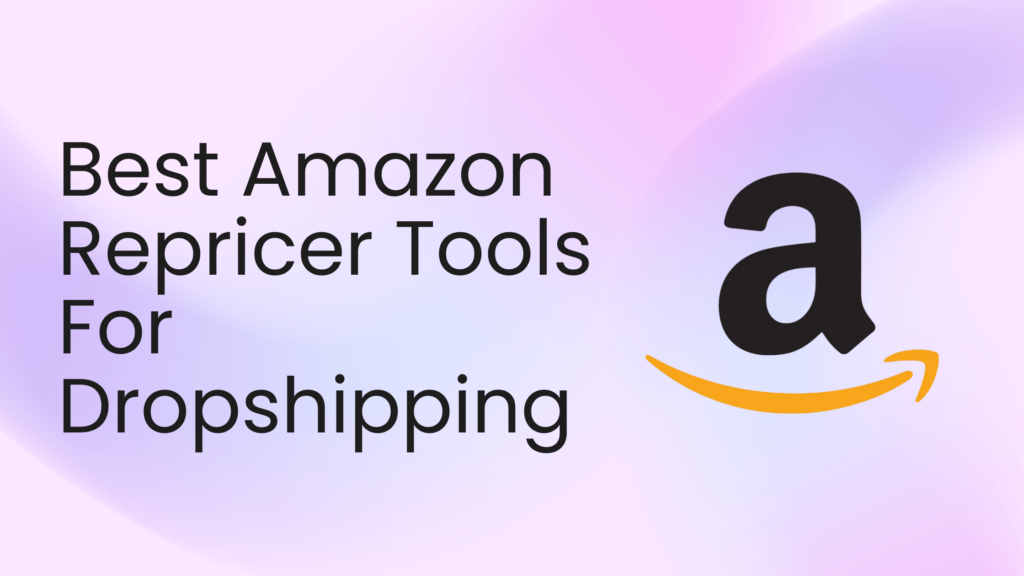Creating a Supplier Scorecard for Your Dropshipping Partners
Unlock the full potential of your dropshipping business with supplier scorecards – a straightforward yet powerful strategy to make performance better and keep customers coming back.
This article explains how scorecards serve as a critical tool for growth, offering the information needed to make smart choices and stay competitive in the busy world of e-commerce.
Use this guide to streamline operations, improve vendor relations, and drive your company’s success.
Understanding the Value of Supplier Scorecards in Dropshipping
In the rapidly growing world of e-commerce, dropshipping has carved out an important place. This fulfillment model, where you sell products without having them in stock, depends on suppliers being excellent.
Your ability to deliver what customers order, and do it fast, can make or ruin your business.
Enter the supplier scorecard: a strategic tool that shows how suppliers are doing, making sure your dropshipping business runs smoothly.
The Role of Supplier Scorecards in Streamlining eCommerce
The e-commerce landscape moves fast and leaves little room for mistakes. Customers expect perfect orders delivered promptly, which puts a lot of pressure on your supply chain.
A supplier scorecard thoroughly shows each supplier’s performance, offering data on key things like shipping speed, product quality, and inventory levels.
These metrics are crucial; they let you see which suppliers are keeping up with demand and which are falling behind, so you can make informed decisions that keep your business flexible and focused on customers.
An example of how the scorecard is useful could be seen in how it helps you manage really busy shopping periods.
By reviewing metrics from past rush times, you can predict which suppliers can handle increased demand and plan your inventory accordingly.
This proactive action based on solid data helps avoid stockouts and delays, keeping customers happy and trusting.
Aligning Scorecards With Business Goals and Customer Expectations
Your strategic goals likely include:
– Increasing sales
– Encouraging customer loyalty
– Achieving smooth operations
Supplier scorecards are key to these objectives. By clearly showing supplier performance, scorecards let you give every customer a positive experience with your brand. This directly impacts your bottom line; happy customers are more likely to buy again and tell others about your brand.
Moreover, supplier scorecards give you the leverage to demand better service.
If a supplier consistently meets their targets, they become a preferred partner. But, if a supplier falls short, the scorecard shows clear proof for discussions on how to get better.
It’s a proactive way to manage your supply chain that connects closely with your business’s success metrics, from money made to customer satisfaction.
In essence, using supplier scorecards is a strategic move that supports the pillars of your business.
They provide clarity in a complex system, helping you maintain the high standards your customers want and need.
Key Components of an Effective Supplier Scorecard
It’s important to ensure that each element of the scorecard directly contributes to operational success and customer satisfaction.
Assessing Product Quality and Consistency
The accuracy of a product against its description and specifications is non-negotiable.
The scorecard should detail the criteria for assessing whether products meet the advertised quality, size, color, and function. Metrics like defect rates, returns due to faults, and the frequency of customer complaints should be monitored closely.
For instance, if a significant number of a particular item is being returned because it doesn’t work as described, this needs to be addressed with the supplier immediately.
Consistent monitoring of these metrics ensures that customers receive what they expect, which is essential for building trust and loyalty.
Measuring Shipping Times and Reliability
Shipping times are crucial to customer satisfaction.
The scorecard should track key metrics such as:
– Order fulfillment time
– Lead time
– Delivery durations
– Consistency of transit times
Standards should be set for on-time shipping, and suppliers’ performance against these benchmarks should be recorded.
Late shipments should be documented, and suppliers should be rated on overall reliability.
A supplier’s inability to ship on time can lead to customer dissatisfaction, potentially resulting in lost sales and damage to your brand’s reputation.
Inventory Accuracy and Real-time Visibility
Inventory management is integral to a smooth operation, and the scorecard should reflect this.
Criteria for evaluating inventory accuracy include the integration of systems between the dropshipper and the supplier. Metrics should be in place to provide real-time visibility into supplier warehouse stock quantities and status.
When inventory data is accurate, it prevents issues such as overselling and backorders, which can be costly in terms of both finances and customer trust.
For example, accurate stock levels enable you to fulfill orders promptly, maintaining the reliability customers expect.
Rating Communication and Responsiveness
Effective communication with suppliers is imperative for managing the complexities of dropshipping.
Metrics for assessing a supplier’s communication include response rate, response time, and the degree of proactive communication regarding critical issues. The ease of contacting suppliers and the clarity of their responses are also important elements that should be scrutinized.
Good communication impacts order management, issue resolution, and ultimately influences the customer experience. For example, a supplier’s quick response to a stock query can mean the difference between securing a sale and losing a customer to a competitor.
By focusing on these key components, the supplier scorecard becomes an invaluable tool for maintaining high standards and ensuring that the business operates like a well-oiled machine, with every part working in harmony to deliver the best possible experience to the customer.
Implementing the Supplier Scorecard in Your Dropshipping Business
Taking the step to introduce a supplier scorecard system requires clear communication and a mutual understanding of its significance. It’s about developing a way to measure how well suppliers are meeting the needs of your business and, by extension, your customers.
Initiating Supplier Engagement and Setting Expectations
When you bring suppliers into the fold of using performance scorecards, it’s crucial to communicate the benefits.
Stress the point that these scorecards are not just oversight tools but pathways to enhancing service quality and business growth.
When rolling out new performance tracking programs, anticipate suppliers’ concerns, and address them directly.
Clarify that these metrics are not about penalization but about finding opportunities to improve and thrive together.
Establishing clear expectations from the outset lays the groundwork for success.
This means setting precise criteria for what good performance looks like and how it will be measured.
For instance, instead of vaguely asking for “quick shipping,” specify that orders need to be shipped within 24 hours of receipt to meet customer demand.
Integrating Scorecards with Inventory and Order Management Systems
For the scorecards to be effective, they need to be integrated with your existing inventory and order management systems.
This integration allows for the seamless flow of performance data, which is essential for quick analysis and action.
Inventory Source, for instance, offers a direct sync with Shopify, meaning that supplier performance metrics are automatically updated in your dashboard.
This is where the benefits of real-time data collection become clear, as it enables immediate insights into supplier operations.
Best practices for setup include establishing systems that capture essential data automatically but also allow room for manual review when necessary.
This ensures a full view of supplier performance, blending the efficiency of automation with the discernment of human oversight.
By establishing these systems, you secure a mechanism that not only tracks but also enhances the supplier relationships that are so vital to your dropshipping operation.
Utilizing Scorecards for Supplier Selection and Management
Scorecards serve as a systematic approach to select and manage suppliers, ensuring that they meet the high standards required for successful dropshipping.
Leveraging Scorecards for Finding and Onboarding New Suppliers
Using a set of standardized criteria, scorecards enable the pre-qualification and evaluation of new supplier candidates effectively.
This process ensures that potential suppliers are capable of meeting your business needs before entering into a partnership.
By defining clear benchmarks for performance, you can streamline the onboarding process, making sure that new suppliers are familiar with and capable of meeting these expectations from the start.
For example, by specifying that all orders must be shipped within a specific timeframe, suppliers know exactly what is required of them, eliminating any confusion and setting clear performance standards. This transparency in expectations helps avoid future conflicts and lays the groundwork for a strong working relationship.
Ongoing Monitoring and Performance Improvement
Continual tracking and analysis of supplier scorecard metrics are essential for maintaining a high-performing supply chain.
By closely observing supplier performance data, you can pinpoint trends and identify areas where improvements are needed.
This could involve examining why certain products are frequently out of stock or why shipping delays occur at specific times.
This level of detail in monitoring allows you to make informed decisions that enhance supplier relations and improve business operations. For instance, if you notice delays in shipping times, you can work with the supplier to pinpoint the cause and develop a plan to address the issue.
In practice, supplier scorecards provide a framework for ongoing performance dialogue, contributing to a culture of continuous improvement. By consistently reviewing and acting on the data, you ensure that suppliers remain aligned with your business objectives and customer service standards, leading to a more efficient and reliable dropshipping operation.
Addressing Challenges and Refining the Scorecard Process
You’ll find that implementing a supplier scorecard system is a powerful step, but it’s not without its hurdles. It’s important to approach these challenges with clear strategies and a willingness to adapt and refine your methods.
Handling Common Obstacles in Supplier Scorecard Adoption
Resistance from suppliers to new performance tracking systems can be a significant barrier.
To overcome this, it’s effective to focus discussions on the concrete benefits of the scorecard, such as improved process efficiency and the potential for increased orders due to better performance.
If suppliers are concerned about the transparency of performance metrics, reassure them by clearly explaining how these metrics are used to support their growth and address any issues collaboratively.
When there’s a discrepancy between the data suppliers report and what your platform tracks, it’s essential to have a process in place that resolves these differences calmly and logically. Regular meetings that focus on examining the data can help both sides understand and rectify inconsistencies.
Enforcing compliance is critical for maintaining standards and ensuring a beneficial partnership.
One way to do this is to have a clear agreement in place from the outset that outlines performance expectations and the consequences of not meeting them.
For example, suppliers who fail to meet the agreed-upon metrics repeatedly might face order reductions or even a pause in the partnership until issues are resolved.
Regular Refinement of Scorecards
Your business will evolve, and your supplier scorecards should evolve with it. It’s advisable to schedule reviews of your scorecard metrics at regular intervals, such as every quarter or twice a year, to ensure they remain relevant and align with both your business needs and industry standards.
When adding or revising metrics, it’s beneficial to involve suppliers early in the process.
This not only helps in gathering valuable feedback but also keeps suppliers engaged and aware of the changes.
For example, if customer preferences shift toward faster delivery times, you may need to adjust your scorecard to prioritize shipping speed.
Maintaining momentum when updating scorecards is about clear communication and collaboration.
When suppliers are actively involved in the process and understand the reasons behind changes, they are more likely to stay committed to meeting the updated standards.
This collaborative approach fosters a positive, ongoing relationship and continuous improvement, keeping your supply chain strong and responsive to the needs of your business and customers.
Takeaway
Scorecards do more than just rate suppliers; they are tools that spark growth and improve customer happiness.
They let you keep a close watch on:
– Product quality
– Shipping speed
– Inventory precision
– How well suppliers talk to you
These details guide you to make choices that match your business aims. Scorecards also push suppliers to improve.
Start using scorecards now. Add them into your systems, talk to your suppliers about what you expect, and keep adjusting the process.
Use scorecards to make your dropshipping work better and keep your customers coming back.







